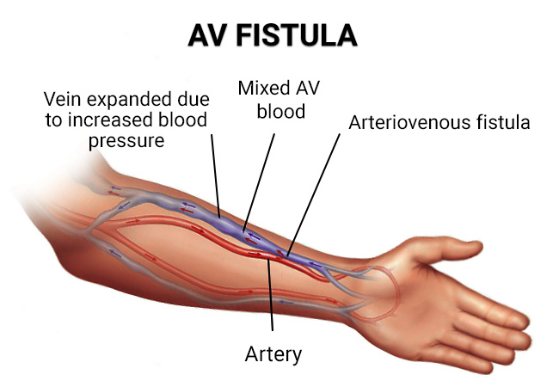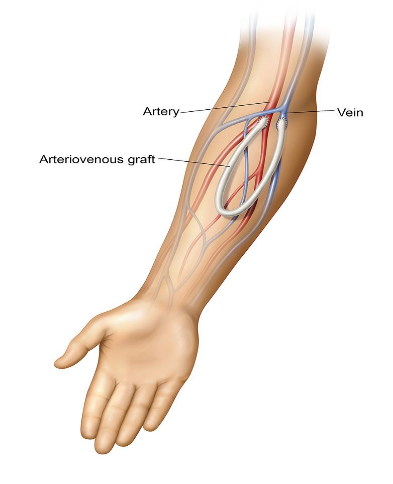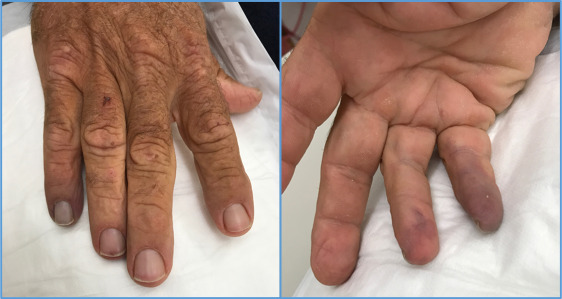 Before beginning treatment for end-stage renal disease, an individual needs vascular access or connection made to their bloodstream. This access allows blood to travel to and from the dialysis machine to help filter the waste products and excess fluid from the body. Vascular access can be achieved through various methods, including an arteriovenous (AV) fistula, AV graft or central venous catheter.
Before beginning treatment for end-stage renal disease, an individual needs vascular access or connection made to their bloodstream. This access allows blood to travel to and from the dialysis machine to help filter the waste products and excess fluid from the body. Vascular access can be achieved through various methods, including an arteriovenous (AV) fistula, AV graft or central venous catheter.
What is an AV Fistula?
AV fistula is the “gold standard” long-term solution for dialysis access, it is a connection made surgically between an artery and vein usually located in the arm. AV fistulas are the preferred vascular access for long-term hemodialysis because they last longer than other dialysis access types and are less prone to infection and clotting. Fistula maturation takes approximately 6 to 8 weeks before it can be used for hemodialysis. Not everyone is a candidate for an AV fistula due to various conditions, but alternatives do exist and your vascular surgeon will work with you to choose the best option.
 What is an AV Graft?
What is an AV Graft?
An AV graft is similar to a fistula in that it connects the artery to a vein. It differs in that it is constructed by sewing a synthetic tube between an artery and vein. An AV graft for dialysis is ideal if you do not have an adequate vein for AV fistula creation. An AV graft can be used within 2 to 4 weeks post placement.
Imaging
Preoperative duplex mapping of the upper extremity veins and arteries focusing on vein diameter and artery patency should be performed prior to surgery.
Complications
The most common complications of dialysis access include infection and low blood flow. AV grafts more often develop low blood flow, an indication of clotting (thrombosis) or narrowing (stenosis) of the access. The AV graft may then require angioplasty, a procedure to widen the narrow part.
Hemodialysis access-related hand ischemia (decreased blood flow) or steal syndrome is uncommon but a complication of an AV fistula or AV graft.

Steal syndrome symptoms can range from mild to severe and include: hand numbness, pain, coldness and weakness, as well as significantly reduced blood flow/pressure to affected tissues. In extreme cases, it can cause tissue death (gangrene), which may lead to the loss of fingers or limbs. The hand must be checked for symptoms, the earliest symptom is numbness of the fingers. Many cases are subtle and can develop weeks to months after access placement. Patients may complain of pain or numbness in the hand only during hemodialysis, when episodes of hypotension exacerbate the symptoms of steal syndrome.
Risk factors for the development of steal syndrome include diabetes, female gender or underlying upper extremity arterial insufficiency.

